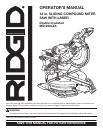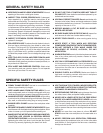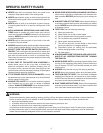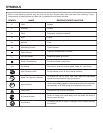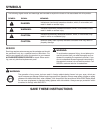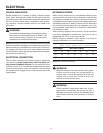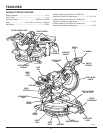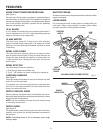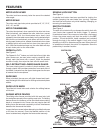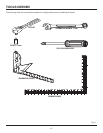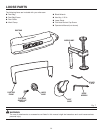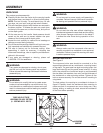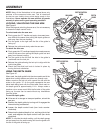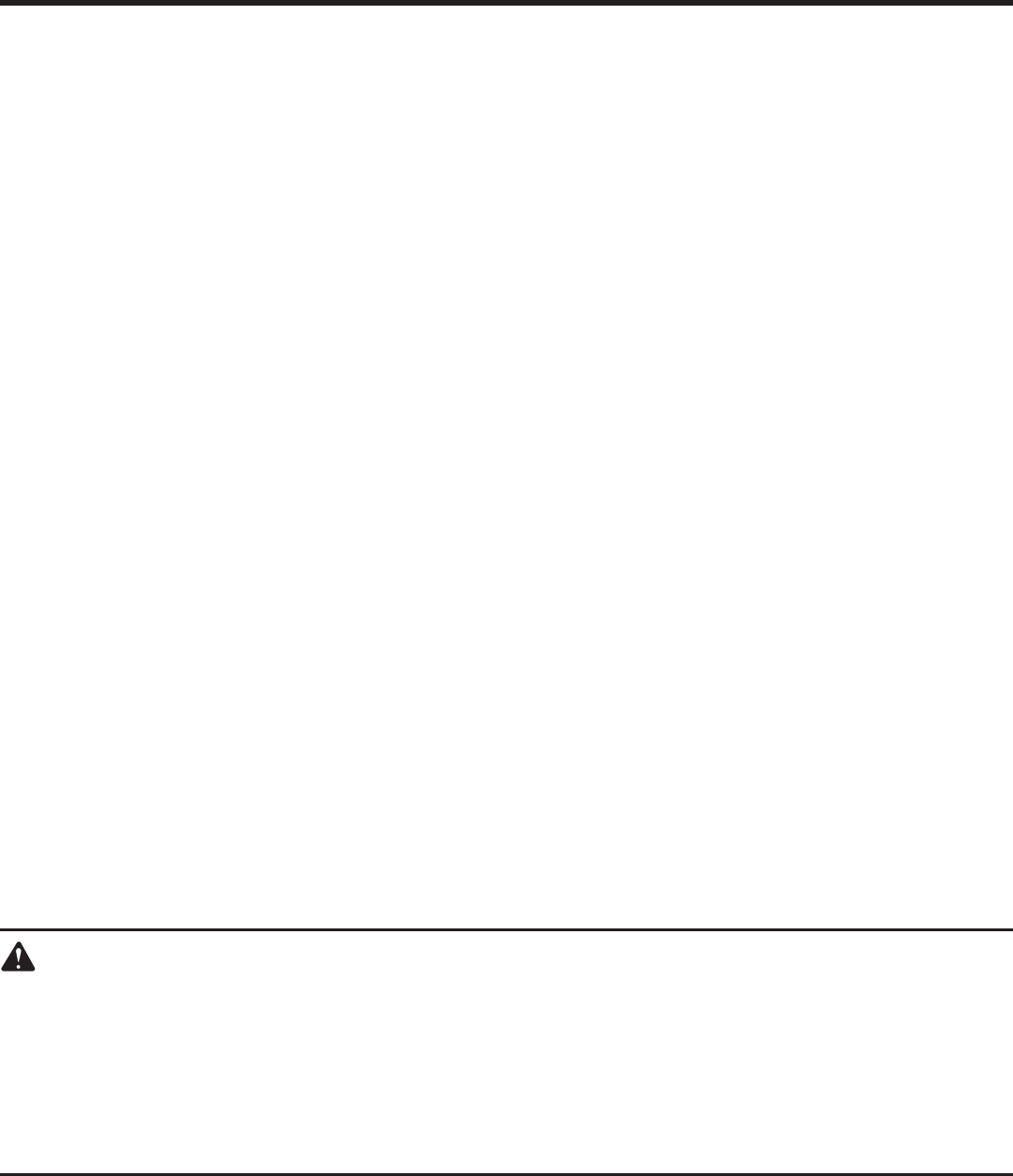
5
SPECIFIC SAFETY RULES
NEVER hand hold a workpiece that is too small to be
clamped. Keep hands clear of the cutting area.
NEVER reach behind, under, or within three inches of the
blade and its cutting path with your hands and fingers for
any reason.
NEVER reach to pick up a workpiece, a piece of scrap,
or anything else that is in or near the cutting path of the
blade.
AVOID AWKWARD OPERATIONS AND HAND POSI-
TIONS where a sudden slip could cause your hand to
move into the blade. ALWAYS make sure you have good
balance. NEVER operate the miter saw on the floor or in
a crouched position.
NEVER stand or have any part of your body in line with
the path of the saw blade.
ALWAYS release the power switch and allow the saw blade
to stop rotating before raising it out of the workpiece.
DO NOT TURN THE MOTOR SWITCH ON AND OFF
RAPIDLY. This could cause the saw blade to loosen and
could create a hazard. Should this ever occur, stand clear
and allow the saw blade to come to a complete stop.
Disconnect the saw from the power supply and securely
retighten the blade bolt.
IF ANY PART OF THIS MITER SAW IS MISSING or
should break, bend, or fail in any way, or should any
electrical component fail to perform properly, shut off
the power switch, remove the miter saw plug from the
power source and have damaged, missing, or failed parts
replaced before resuming operation.
IF THE POWER SUPPLY CORD IS DAMAGED, it must
be replaced only by the manufacturer or by an authorized
service center to avoid risk.
ALWAYS STAY ALERT! Do not allow familiarity (gained
from frequent use of your saw) to cause a careless
mistake. ALWAYS REMEMBER that a careless fraction
of a second is sufficient to inflict severe injury.
WARNING:
Some dust created by power sanding, sawing, grinding, drilling, and other construction activities contains chemicals
known to cause cancer, birth defects or other reproductive harm. Some examples of these chemicals are:
• lead from lead-based paints,
• crystalline silica from bricks and cement and other masonry products, and
• arsenic and chromium from chemically-treated lumber.
Your risk from these exposures varies, depending on how often you do this type of work. To reduce your exposure
to these chemicals: work in a well ventilated area, and work with approved safety equipment, such as those dust
masks that are specially designed to filter out microscopic particles.
MAKE SURE WORK AREA HAS AMPLE LIGHTING to
see the work and that no obstructions will interfere with
safe operation BEFORE performing any work using your
saw.
ALWAYS TURN OFF THE SAW before disconnecting it
to avoid accidental starting when reconnecting to power
supply. NEVER leave the saw unattended while connected
to a power source.
THIS TOOL has the following markings:
a) Wear eye protection.
b) Keep hands out of path of saw blade
c) Do not operate saw without guards in place.
d) Do not perform any operation freehand.
e) Never reach around saw blade.
f) Turn off tool and wait for saw blade to stop before
moving workpiece or changing settings.
g) Disconnect power (or unplug tool as applicable)
before changing blade or servicing.
h) No load speed.
ALWAYS MAKE SURE THE SAW BLADE HAS CLEAR-
ANCE OF ALL OBSTRUCTIONS BEFORE TURNING
THE SAW ON.
MAKE SLIDING CUTS by pushing the saw blade down
on top of the workpiece then sliding it back toward the
rear of the saw. DO NOT pull the saw toward you while
making a cut.
ALWAYS carry the tool only by the carrying handles.
AVOID direct eye exposure when using the laser guide.
THIS SAW CAN TIP OVER if the saw head is released
suddenly and the saw is not secured to a work surface.
ALWAYS secure this saw to a stable work surface before
any use to avoid serious personal injury.
SAVE THESE INSTRUCTIONS. Refer to them frequently
and use to instruct other users. If you loan someone this
tool, loan them these instructions also.



